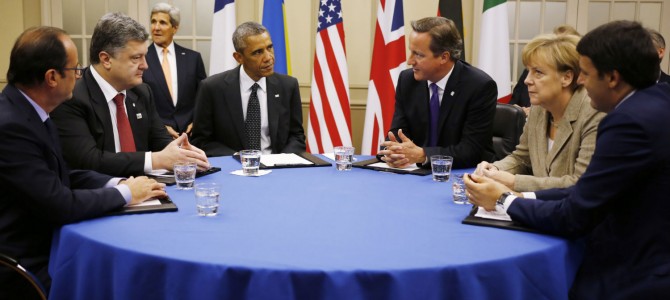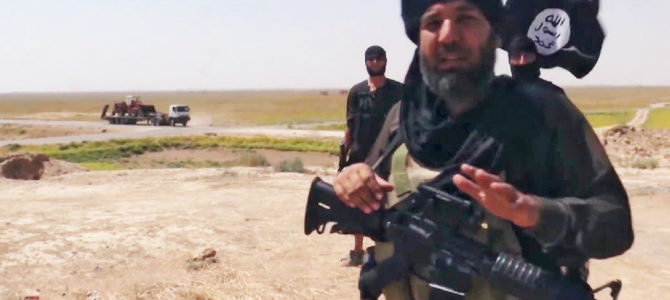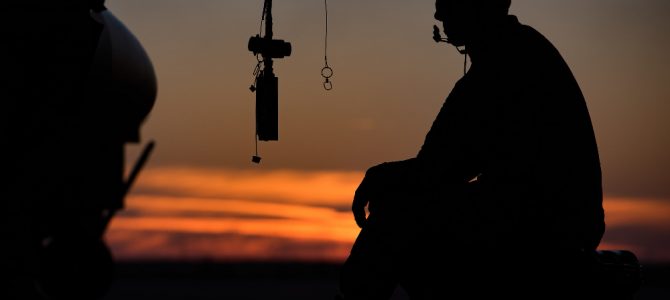
Since the events of San Bernardino, Americans have gotten seriously concerned about terrorism and now want to put boots on the ground in the fight against ISIS.
A recent Harvard University survey showed that 62 percent of millennials wanted to put combat forces into Syria to take on ISIS. Both Republican presidential hopefuls and Hillary Clinton also want a more muscular policy against ISIS. The solution all these candidates are coming up with, however, is no different than what President Obama would like to have happen—that European allies and regional partners band together to send a force to destroy ISIS and restore order in Syria.
For several reasons, that is an empty pipe dream. The history of alliance warfare and the constraints that America’s allies face on force deployment make this painfully obvious.
How Alliance Warfare Has Worked Since WWII
The first big U.S.-led coalition effort after the Second World War was the Korean War, where 90 percent of the troops were Americans. Although the Cold War was then unfolding, our European allies were still devastated by the impact of the Second World War. Britain, until 1954, actually had food rationing; the British needed special waivers to bake cakes to celebrate the royal wedding of 1953. In the light of such conditions it was perhaps inevitable that allied contributions would be low.
The next big coalition war was the first Gulf War, which was again a predominantly American affair. The wars in Afghanistan and Iraq were called coalition efforts, and George W. Bush even dubbed Australian Prime Minister John Howard the deputy sheriff because of his steadfast support. Once again, however, coalition support was marginal. Tables 1 and 2 show the casualty rates by nationality in the second Iraq war and the Afghan war.
 As these tables show, the overwhelming casualties in both wars were American, with the British a distant second. Other countries’ losses should have been well within their threshold for acceptable losses. In a 10-year period, Canada lost 158 soldiers, averaging 16 a year, or 1.2 soldiers a month. Australia lost two soldiers in Iraq—one to a vehicular accident and the other to an accidental weapons discharge.
As these tables show, the overwhelming casualties in both wars were American, with the British a distant second. Other countries’ losses should have been well within their threshold for acceptable losses. In a 10-year period, Canada lost 158 soldiers, averaging 16 a year, or 1.2 soldiers a month. Australia lost two soldiers in Iraq—one to a vehicular accident and the other to an accidental weapons discharge.
In Australia, the Iraq war had high levels of public support, but that was largely due to the very low casualty rate. I asked a retired Australian vice-chief of the Army how many casualties it would take to get the Australians out of Iraq. He replied: “Ten body bags at one time.” These figures highlight that these nations were unable to sustain large numbers of casualties or even sustain deploying and equipping a large number of troops with adequate equipment in a war zone.
The latter point became central in the Libyan intervention, where the United States was to lead from behind. NATO essentially ran out of precision-guided munitions on its aircraft, so the Danish, Norwegian, and other small air forces had to do nearly 40 percent of the attacks because they flew American aircraft that could be resupplied with U.S. weaponry and spare parts.
This unwillingness to take casualties or to even invest in defense is unlikely to change in the near to medium term for the European nations. They know the United States will not abandon its NATO treaty obligations. Additionally, these countries took their peace dividend after the death of the Cold War to rapidly shrink their armed forces and shift that money to social welfare programs.
Further, given their countries’ aging demographics, European governments cannot significantly increase defense spending because of their growing commitments to healthcare and the shrinking demographic of able-bodied men and women who can be sent to the battlefield. Moreover, because Europe is a far closer target for ISIS, it will use what money is available to boost the homeland security efforts of these nations.
Finally, bringing peace to Syria will require keeping a military force there for decades, and no European country has the resources or the willingness to do so. Iraq and Afghanistan have shown that, despite the best efforts of American and western trainers, local populations have not been converted into an effective and reliable fighting force—hence the need for a continued American presence in both countries. The question then emerges: For how long must these forces stay in these countries? Most likely three generations, a period of 40 to 50 years.
The first generation will have to be pacified, and after 15 years of war in Afghanistan and 12 years of conflict in Iraq, we can see pacification is a long way away. Once pacification has taken place, only then can civil society, democracy, and good governance be created. The third generation that emerges into this society will view liberal democracy as the natural state of affairs.
Neither America nor our European allies have the will or time to implement such a policy. This then means one has to rely on regional forces.
Arab Allies Are Even More Unlikely to Step Up
With the exception of Donald Trump and Lindsay Graham, who want to put American boots on the ground in significant numbers, every presidential candidate wants to forge a regional coalition to fight ISIS. In this happy fantasy, countries like Saudi Arabia, Egypt, the United Arab Emirates, Qatar, Jordan, and Kuwait will come together to drive ISIS out of Syria and Iraq and then bring about order and stability in these countries.
The problem with this fantasy is that none of the Arab nations have the military capability, the will, or the manpower to do the type of nation-building the United States has done in Germany, Japan, and South Korea.
Saudi Arabia has the third-largest defense expenditure in the world, but the country’s actual ability to successfully prosecute a war without foreign assistance is highly questionable. The late King Abdullah kept calling for America to cut the head off the Iranian snake, and the Saudis remain very concerned about Iran’s nuclear ambitions and its forays in the Middle East. But the Saudis cannot take on the Iranians or any other military force by themselves.
Studies done on Saudi military capability show a heavy dependence on U.S. manpower for technical and maintenance assistance to keep that country’s military arsenal operational. Even against a relatively weak rebel group in Yemen—who are not half as well-armed as Saudi Arabia—the Saudis had to ask Pakistan to provide troops to assist.
The UAE’s air force has done a good job in Afghanistan and in the Libyan campaign, but the country is too small to be able to provide a significant number of troops to sit interminably in the deserts of Syria and Libya. Nor do any of the other Gulf states have the manpower to provide such a force long-term. Some citizens of these regional states have, instead, helped bankroll ISIS, and the central concern for these governments is not Sunni extremism in Syria and Iraq but a rising Shia Iran.
So Here Are Our Real Options
The United States, therefore, has two choices. One is to go it alone by putting a large number of soldiers on the ground to defeat ISIS, then to engage in the laborious and time-consuming task of nation-building. But this will require manpower, and the Harvard University survey offered little hope in this regard.
While 62 percent of millennials wanted to wage war in Syria, 60 percent of them were unwilling to serve in the U.S. military. This then begs the question: Where is America going to get the troops to sit for three generations in the Middle East? The draft is a nonstarter for the American people and the U.S. military, which fears diluting the high-quality force it has created since the army of conscripts was disbanded.
The second possibility is to increase security measures and educate the American public about how to stand up to terrorism. Since September 11, America’s domestic security agencies have done a sterling job training for and responding to active-shooter and terrorist incidents. After the Boston bombings, high levels of cooperation between the public and the police led to the quick identification of the Tsarnaev brothers as the culprits. In San Bernardino, the response time of the police was four minutes.
America has done sterling work in the field of domestic security, but what the country’s leadership has failed to do is reassure the people. Instead (and here I fault the Bush administration) we have scared the general populace and promoted hysteria.
The best way to fight terrorism is for the general public to show resilience in the aftermath of an attack and say business as usual. The next day after the London subway bombings of July 2005, British citizens once again took to their train system to commute. The same happened after the Madrid bombings, and even more emphatically after the Mumbai attacks of 2008, where a week later the stock exchange was open, India was playing international cricket on its own soil, and the country planned for a general election.
America’s leadership has to start saying that we are 95 percent safe but no one can be 100 percent safe. Israel takes great pride in its national security and anti-terror measures, but it is a long way from being free of terrorist acts. Thus even if the United States were to adopt Israeli tactics, it would not help solve the issue.
What will help is continued monitoring, effective security training, and building national resilience. Getting our regional allies to cut off the supply of weapons, money, oil transit routes, and recruits would be a powerful first set of steps in taming the ISIS beast. Saudi Arabia and Turkey, that means you.









